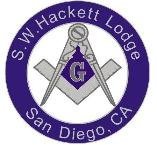


|
|
Masons at the Battle of Gettysburg The Battle of Gettysburg, which took place from July 1 through July 3, 1863, is the most famous, most bloody, and in many ways the most significant battle of the U.S. Civil War from 1861 to 1865. Robert E. Lee took his Confederate Army of Northern Virginia on a controversial invasion of the Northern States in an effort to alleviate Virginia from having armies continue to fight there, and also in an effort to bring the Union Army of the Potomac out of its fortifications, to a climactic battle that could end the war and result in independence for the Confederate States of America. Abraham Lincoln understood the significance of Lee's invasion of Pennsylvania, and he appointed Union Major General George G. Meade to lead the United States army, with orders to prevent any attack on Washington, D.C., or Baltimore, Maryland. General Meade led his army into northern Maryland, while General Lee split his army into different parts with missions leading to the hoped-for capture of Harrisburg, the capital of Pennsylvania, with other missions to follow. However, Lee did not realize that Meade's army was as close as it was, until June 28. Then, he issued orders for the parts of his army to regroup at Cashtown or Gettysburg. In the meantime, some of Lee's army was camped near Gettysburg, and some of Meade's army was in Gettysburg. They clashed briefly on June 30, and again in much larger numbers on July 1. Both sides threw in reinforcements, until the July 1 battle became a very large battle, very hard fought by both sides. At the end of the day the force of overwhelming numbers resulted in a Confederate victory for that day. The Union army regrouped on the hills and ridge south of Gettysburg, in a very strong position, under the leadership of Major General, and Brother, Winfield Scott Hancock, one of the most widely admired generals of the Civil War. On July 2, General Lee attempted to defeat the Union army by attacking both ends of it, in another extremely hard-fought day with thousands of casualties. One of the most significant events of that day was the defense of a hill called Little Round Top by a Maine regiment commanded by Colonel (later Major General), and Brother, Joshua Lawrence Chamberlain. When his men ran out of ammunition, knowing that if he gave up his position the entire battle might be lost, he ordered a bayonet charge that might have been suicidal. Instead, he won a highly-praised victory, plus a Medal of Honor, and fame that resulted in his being later be elected Governor of Maine four times. The climax of the battle took place on July 3. After a quiet morning, in early afternoon General Lee ordered the most massive cannon attack ever on the North American continent. Then, he ordered about 12,000 men to attack the center of the Union position, across about a mile of open country. Both the Southerners and Northerners generally showed great courage in facing each other, realizing that this might be the event that would decide the war and the fate of our country. Among the leaders of this event, known as Pickett's Charge, was Confederate Brigadier General, and Brother, Lewis Addison Armistead. The leader of the Union force being attacked was the Union Major General, and Brother, Winfield Scott Hancock. Armistead and Hancock were both career soldiers, and before the Civil War they were friends when both were U.S. Army officers in California. Both were also Freemasons. When the Confederate attack reached the Union line at Gettysburg, there was fierce fighting. General Armistead was shot twice, and as he went down he gave a Masonic sign asking for assistance. A fellow Mason, a Union officer named Henry H. Bingham, then a Captain, later a higher officer and then a very influential Congressman, came to Armistead's assistance and offered to help. Armistead reportedly asked to see and talk with his friend General Hancock, but he was told that Hancock had been very badly wounded just a few minutes earlier. Union Brother Bingham then helped Confederate Brother Armistead off the field and to a hospital, but Armistead died two days later. General Hancock, to the surprise of many, recovered and resumed his command later in the Civil War. This incident, of a Freemason who was a Union officer helping a Freemason who was a wounded Confederate officer, is one of the greatest examples of the ideals of Freemasonry in action. In 1993, the Grand Lodge of Pennsylvania completed and dedicated a monument on the Gettysburg National Cemetery, with the cooperation and support of the United States government, that shows Brother Bingham, a Union officer, assisting Brother Armistead. This statue is extremely dramatic, and it is called the "Masonic Friend to Friend Masonic Memorial." In the words of Sheldon A. Munn, one of the Freemasons who helped bring about the construction of this monument: "The 'Friend to Friend Masonic Memorial,' at Gettysburg will help demonstrate to the world that Freemasonry is, indeed, a unique fraternity; that its bonds of friendship, compassion and brotherly love withstood the ultimate test during the most tragic and decisive period of our nation's history; it stood then as it stands now, as 'A Brotherhood Undivided!'" For more information, see: Munn, Sheldon A. Freemasons at Gettysburg. Thomas Publications, PO Box 3031, Gettysburg, Pennsylvania 17325, 1993, ISBN 0-939631-68-7. Roberts, Allen E. House Undivided: The Story of Freemasonry and the Civil War. Macoy Publishing and Masonic Supply Co., Richmond, Virginia, 1961, ISBN 0-88053-056-1, also available from Anchor Communications, Highland Springs, Virginia, the publishing company operated by Brother Roberts' widow and children.
|